February is a month of mixed messages , an extra hour of daylight for the gardener and while on the one hand all the senses are shouting stay indoors , snuggle up to the duvet and binge watch Netflix , the practical side ( don’t you just love this voice ) is saying get out there and start cutting back !
It can be a balancing act in trying to get the most out of the winter structure of the perennial grasses and the striking bark of the willow and dog woods but I like to get all the hard pruning and cutting back done by the end of February and in this garden there is a huge amount of willows , dog woods and ornamental miscanthus grass that need attention . Leaving pruning until March means that the normal dormant period is over , the new growth is already beginning and you will be cutting into this which is not good for the miscanthus likewise for the willows .
Looking out the front window in mid February it is Baltic weather with driving rain battering the windows and a wind from the Urals bending the trees and shining through it are our groups of snow drops flowering their little asses off , what a flower and how welcome at this time of year .
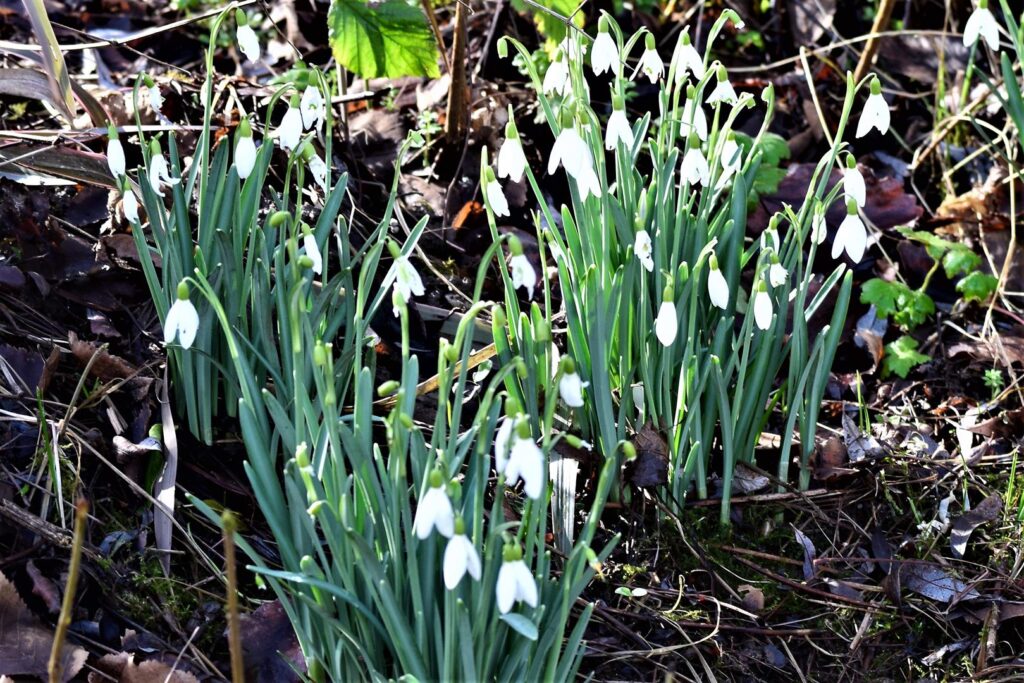
The experts recommend that the best way to plant snow drops is “in the green ” where you buy or acquire clumps of snow drops , official name galanthus nivalis , that have just finished flowering and of course you can plant shop bought bulbs in the Autumn . Snow drops will not grow in wettish conditions and prefer dry locations with some shade and the shade is necessary not for fear of leaf scorching as with normal shade loving plants but because in high summer the snow drop bulb should not shrivel up underground . I generally divide up my established clumps in March and plant out and while I also plant bulbs in November I find these very slow to establish and multiply . Sourcing plants to buy in the green can be difficult as only specialist mail order growers sell snow drops and they can be savagely expensive which is nothing to the committed galantophile and a sought after newly developed snow drop bulb can sell normally for up to 90 euros a pop while in 2015 a single rare bulb sold for 2000 euros .
The reason snow drops are expensive is that they are slow to propagate commercially and most gardeners I know grow the normal snow drop and would blanch at the idea of spending huge money and most gardeners exchange snow drops as gifts or swaps to other gardeners . The snow drop flowers for two weeks but at the most vicious weather time of the year here when you rarely have anything else in flower except for hellbores and the odd early daffodil which are big shouty type plants but there is something charming about the dainty shy snow drop which is why it is so loved .
Above all other plants the snow drop inspires love and eccentricity to the degree that there is a special name for it’s devotees who are called Galantophiles , mad people who have their own snow drop societies organized on a year round basis into the growing , cultivation and propagation of the snow drop and who every February arrange visits and outings to gardens and large estates where huge swathes of snow drops are grown … I read this week that Dan Pearson , the greatest living garden designer , plants 3000 new snow drops every year in the green in his new garden and his plan is to create a metre wide path of snow drops around his entire 20 acre woodland garden and the idea is that this will “light ” up the woods for that three weeks in February and while normally I do not plant anything that has a short flowering period I am prepared to make an exception for snow drops !
But while we rightly praise the snowdrop we should not forget the humble daffodil which will stay in flower for six weeks nor should any garden at this time of year be without crocus’s .
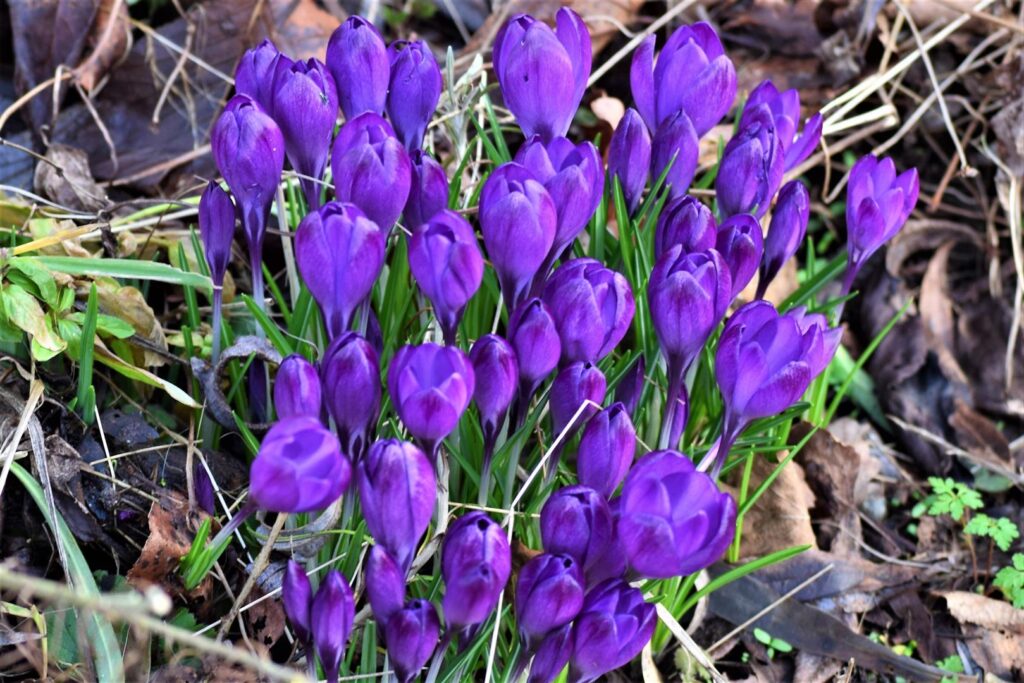
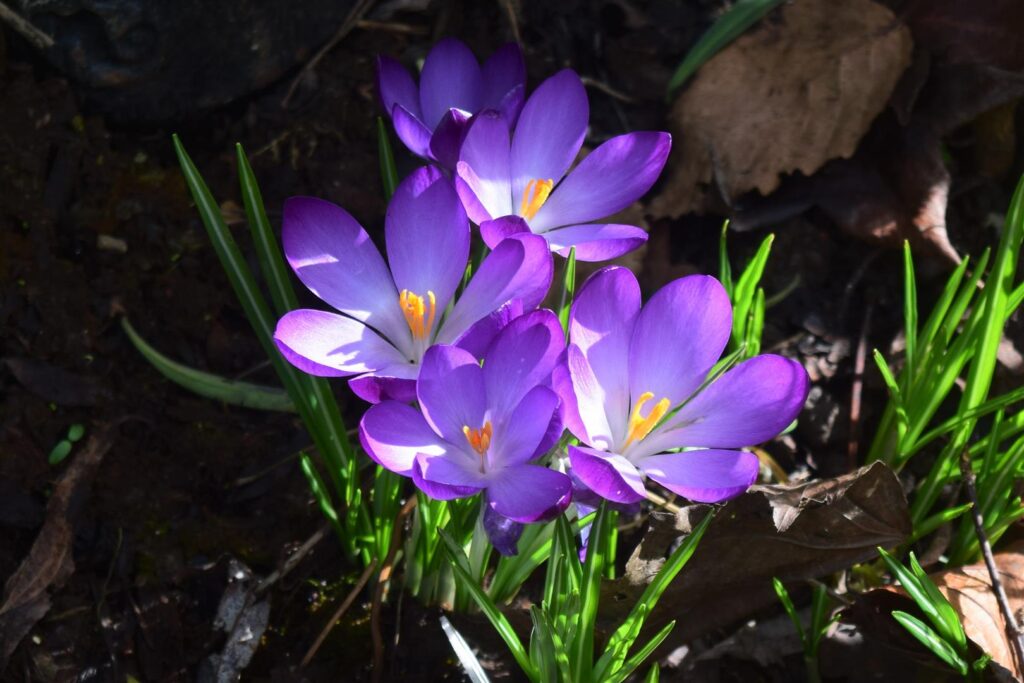
I planted up two new areas in the front garden last year in April / May with a mixture of low growing shrubs and perennials and in October put in the spring flowering bulbs knowing where there was space between the permanent planting . This month I can see what has come through the winter OK apart from the hostas that won’t peep up until the end of March and although in their first year all bulbs are a bit slow to come up it is lovely to check the markers and see the first shoots coming through . Not all plants or bulbs do what it says on the pack and there have been a few failures as mice and squirrels can really have a go at shallow planted bulbs such as crocus and snow drops and of course we all while paying lip service to the right plant right place mantra , we still will take a risk and plant in a dodgy area such as too wet / too dry and certainly this year I know it will be touch and go for some of the hostas I put into the dry front garden parts of which are very shady … all will not be lost as hostas will struggle through and stay alive in even the driest areas and these I will move before the end of April if they look really unhappy .
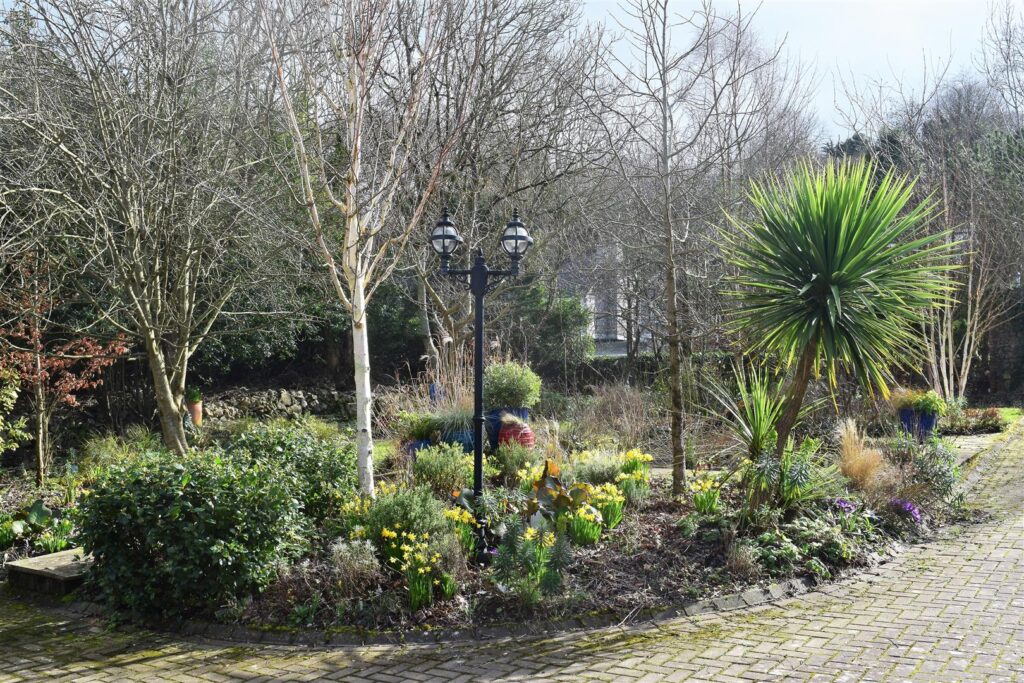
I mentioned last month that I liked to tweak things in the garden and this month I added two pots to the new water area in the wood . These post has been in the garden since July 2015 , both large Greek style amphora part of a group Chris got in for Clonmel Garden Centre and which he hasen’t been able to source since and now with Brexit in full flow with large delays on imports from the UK it will mean that nice pots and garden furniture like Alexander Rose will be difficult to source . These were the last of the batch I got and I have had them parked and planted in the garden since but I knew were not in their forever position but they have now found their permanent home beside the new water area .
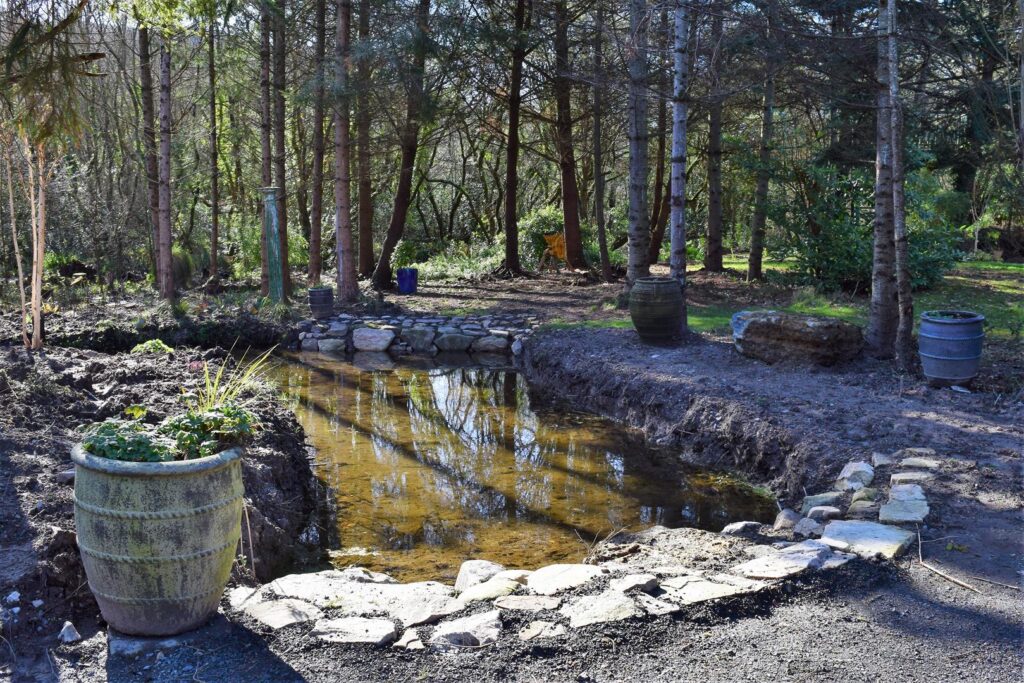
We have over the years built up a large collection of garden pots and containers and tend to go for the unusual , the larger and colourful the better and sometimes unloved eccentric pots that end up in the bargain basement in Clonmel Garden Centre find a home with us and you can check out our collection on the Petrovska Garden website at
Generally when building a new project I sometimes move pots from other parts of the garden to the new area but these are always pots that somehow haven’t clicked and these I will move but we have pieces in the garden that have never been moved from their original position as from the beginning they have made that spot their own and it would leave a gaping hole if moved . We also have pots that were bought because they were just great pots that might not be available again and while they find a nice position in the garden somehow we know that this is not their forever home and they are being parked until the right spot comes along and so far the new water area has taken three such pots that were waiting in pot limbo!
Moving large pots is tricky but apart from enhancing a new location it also serves another purpose and that is refreshing the soil in the moving process . I empty each pot before moving and then “ walk ” them to their new location , laborious true but safer that trying to lift them … I pack the bottom of each pot with rocks to help drainage and this makes them extra heavy but also means they won’t budge if given an accidental nudge … I then use the opportunity to refill each pot with a combination of new soil mixed with John Innes potting compost .
Pots have been in use for the past 12,000 years , originally for cooking and then for storing wine and olive oil from 2000 BC onwards to modern times .

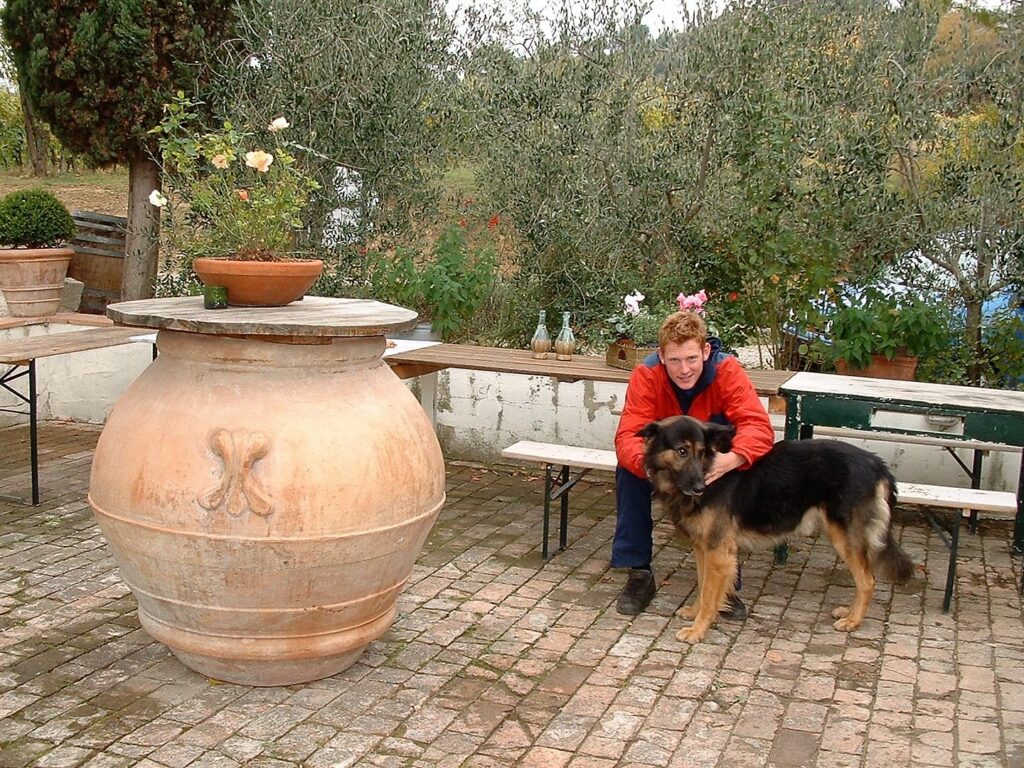
In recent posts I have included extracts from a personal electronic diary I kept during my fifteen year period in the Former Yugoslavia working with various EU missions .
In some locations it was a diversion to pass the time at night but always it was something I enjoyed and as I wrote it allowed me time to think about my own role , interactions with colleagues , mission policies good or bad ( in my opinion ) and looking back now I am glad I kept it as you forget so much over twenty six years since I first started writing the diaries .
in January 1996 while stationed in Montenegro with the ICFY Mission tasked with enforcing sanctions on Serbia during the Bosnian war I was taking over as Team Leader of the Montenegrin Border posts with Bosnia and the previous officer , a retired US Army Lieutenant Colonel , took me out on a patrol to show me the terrain . My previous experience with US military observers had not been good as generally I found them very officious , gung ho and agressively anti serb but what could go wrong on a gentle introductory patrol … read on !
It is worth mentioning that normally ICFY Mission patrols were two observer affairs together with an official Serb Government driver and interpreter … the drivers and interpreters were always assumed to be there to keep an eye on what we were doing and so knowing as they did that our role was trying to block fuel exports to their fellow Serbs in Bosnia we were not flavour of the month with either the drivers or the interpreters and in a bad situation I never felt that we could rely on them .
Diary extract from the IGFY Mission in Montenegro January 1996
Dreadful experience on taking up the new post in Niksic in January with John , an officious officer , showing me the ropes — we were patrolling in the mountains in deep snow and ice accompanied by the usual Serb Interpreter and driver who never deigned to even look at us let alone address a word in our direction – John was being his usual obnoxious self and as I was the new guy I sat in the back seat with the interpreter while he played cops and robbers with the local smugglers , hiding in the trees and then swooping down in the jeep to seize various vehicles with great glee – at about an hour into the patrol I could see we were just tormenting locals trying to eke out a living and this was not sanctions work , just harassment . Suddenly from our hiding place in the woods above the road a little zastava with a few crates on the roof was making a run for it past the border post and John screamed at our driver to intercept – the driver was a bit slow to catch up our would be smuggler in the heavy snow and ice conditions so John swore at him and shouted that he would see him sacked for insubordination when we got back to Niksic as the smuggler had by now already passed the border and was in Bosnia where we had no mandate to operate and would be arrested if stopped by Serb border patrols – I warned John to cool it and get some sense of perspective , we weren’t heading off some oil tanker here – but he wouldn’t listen and insisted that we chase the guy down in Bosnia and kept urging the driver to go faster and overtake the zastava driver and at this stage we were now barrelling along on a tiny track deep in Bosnia and through a great feat of driving our driver had got level with the smuggler , John was signally furiously at zastava man to stop at which point the smuggler , a bearded looking desperado , flipped the finger at John , grinned and gunned his little zastava and our driver wisely in my opinion decided he couldn’t overtake safely so he dropped back … at this John lost it totally and screamed into the driver’s face that this was sabotage and treason and he would have him court martialled on our return to base – immediately our driver jammed on the brakes , our truck skidded to a halt and he turned to John leaned over and said in perfect english “ GET THE FUCK OUT OF MY CAR YOU AMERICAN WANKER ” – John and I looked at each other in complete shocked and stunned amazement , these drivers were not supposed to be able to understand English even – then the driver looked back at me and said “ Irish you can stay but he gets the fuck out ” – John was now looking out on total woods in complete darkness high in the mountains , at least two hours drive from our HQ in Niksic in a hostile landscape where everybody hated us – he begged the interpreter , then me to intercede with the driver who by now was in total control of the situation , smoking nonchalantly ( a major offence in an ICFY vehicle) and listening to Serb turbo rock on the radio – I told John this was ridiculous behaviour on his part and that I now felt that he owed everybody an apology – to no avail the driver insisted he would NOT accept an apology and GET THE FUCK OUT … John had to get out of the truck and we drove back along the track in total silence and back into Montenegro without him .
After a few minutes silence as we drove along in the darkness still in the woods in deep snow I told the driver that personally I didn’t care that John had been ordered out of the car , he deserved it but that it he would almost certainly be seriously assaulted if not worse if the smuggler returned or local Bosnian Serbs found him and that even if he wasen’t intercepted he would freeze to death in the minus 20 deg cold , that we couldn’t leave him and he should accept an apology with a guarantee from John and me that the incident would go no further — he agreed and drove back to where we had left John who by now was petrified , frozen and hiding in some trees off the track and we all made it in one piece and in total silence back to HQ . Turned out the driver was a Professor of English at Belgrade university but just didn’t want to be bothered speaking to us foreigners but he certainly knew some choice words in a crisis !
Colour in the garden in February 2021

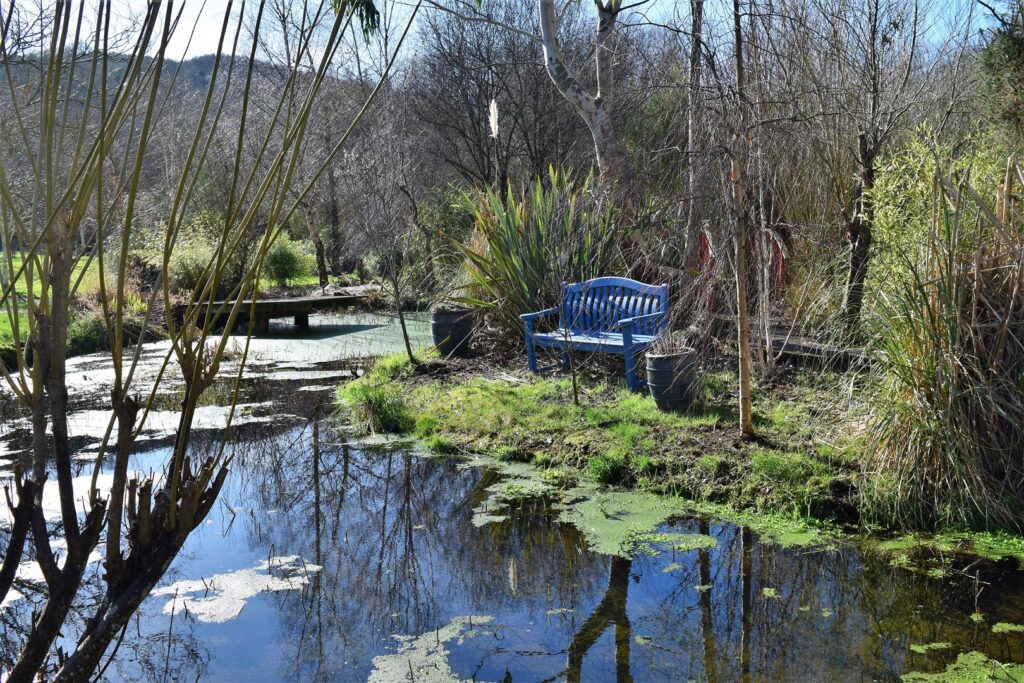
Classic garden design starts with the premise that tall plants are at the back of the border and then cascade down to the smaller plants at the front and the two shrubs that I included in all plantings were the phormium and the cordyline both from New Zealand and they brought a touch of the exotic to gardens across Ireland and the UK . That was until the ten week savage prolonged minus 8 deg freezing spell in the winter of 2010 where all phormiums and cordylines died in their thousands and left gaping holes in gardens. Ever since I have avoided them although some survived in the garden here and are still thriving but this week a gardening friend was digging out some variegated phormiums that had grown too wide and were swamping a clump of silver birch and I was asked if I would like them .
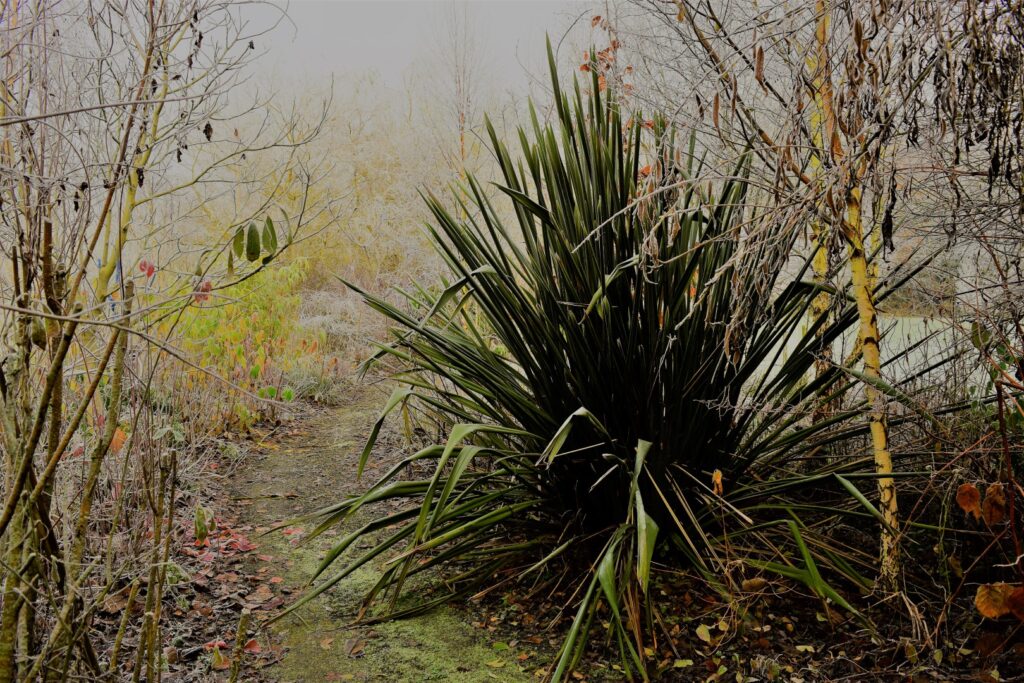
I potted up seven of the donated plants , a beautiful variegated leaf colour and after potting I cut them back to six inches which seems a shame but it is the best way to propagate new phormiums … you can leave the leaf uncut and I have done so in the past but although they will stay alive they never really thrive … I will plant these out in April , it will take two years but these should grow on to be lovely specimens .
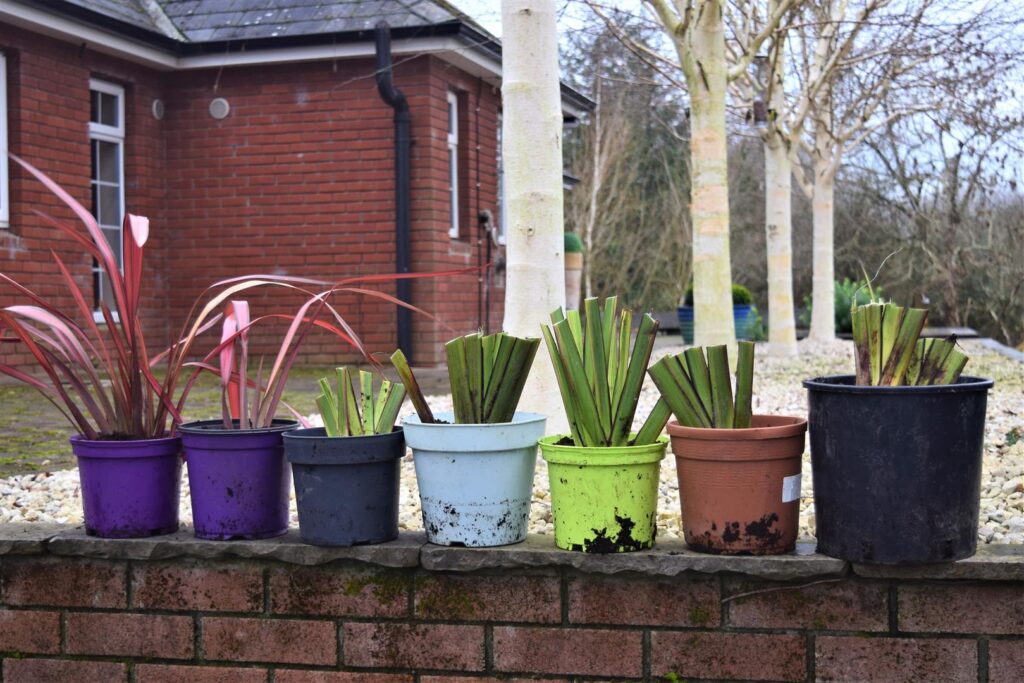
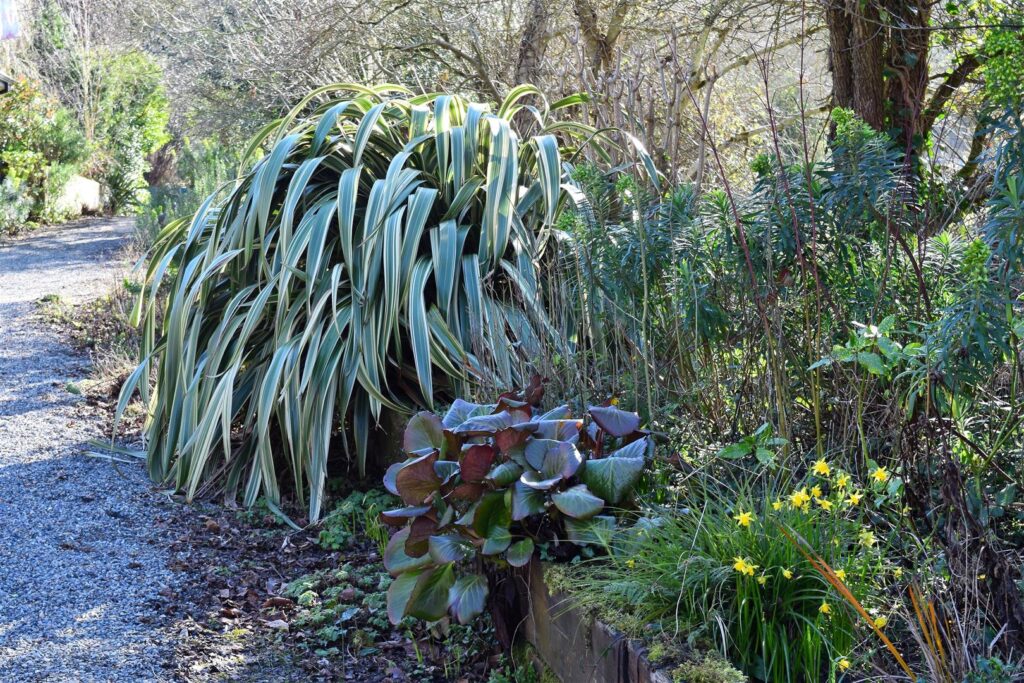
Blackthorn Trees along with Hawthorn are reckoned by some as essential tree for the garden and were considered sacred by the Celts and the thorns used in magic rituals such as pricking out the eyes of a doll representing an enemy . Irish farmers still consider it bad luck to cut down a hawthorn tree and even today you will see a single hawthorn growing in the middle of a field as no one wants to tempt fate by cutting it down .
I am not a fan of blackthorns because of the thorns and just saying thorns doesen’t quite cover how lethal the blackthorn thorns are as at over two inches long they can be considered a lethal weapon and cause extreme damage to the eyes if pruning and not careful . We took out a complete thicket of blackthorns over ten years ago with a digger to clear a small field for a lawn but left a few growing along the stream as the white flowers are lovely in May but also because the trees were not in our way but it has been a devil to keep brambles from growing through them so yesterday as we were pruning back the golden willows in that area Snezana suggested we cut back the blackthorns to a more manageable size where they can be pruned regularly to a metre high … it took us over an hour with the chain saw to get it lower and a lot of slashes across my hands from the thorns as I never wear gloves in the garden … reminder to myself … wear gloves in future when cutting back blackthorn !


As I have documented before I have been hard pruning the golden willows for the past five years to a single stem as this gives a dramatic look in winter and the harder you cut back the more vibrant the colour is . I always refer to them as golden willows and all of ours are grown in situ from slips / cuttings roughly ten inches long and the thickness of a pencil and I get mainly a 70 % success rate , I plant in groups of five and then thin out to the two strongest and these I cut back hard for the first three years and then let a single leader grow to about five feet before pollarding to a crown … the golden willow is in fact a fiery orange -red colour whose proper name is salix alba variety vitellina “ britzensis” which I bought from a specialist willow nursery through the Clonmel Garden Centre twenty years ago in an order of 500 rooted willow cuttings that I used to cover a damp , watery lower field in December 2000 , our first ever planting for what was to become Petrovska Garden .
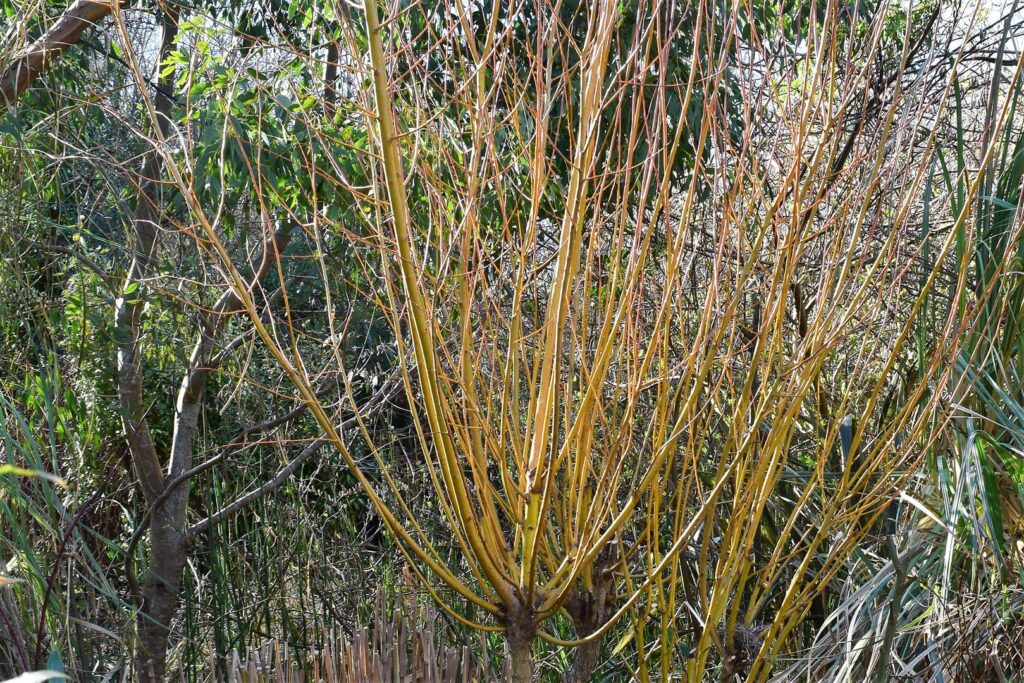
I first saw this coppice of golden willows a few years ago in Carl Wrights garden in Co. Clare and doubtless Carl saw it somewhere else , a good idea is a good idea !
Sometimes nature takes a hand in cutting back and last weeks high winds took down two large conifers in the Lower Garden where the ground is wettish and the roots do not anchor so well … we are never unhappy when we lose these particular conifers , horrible trees that were here when we came here twenty years ago , they contribute little to the garden and are only suitable as cash crop products on the mountain .

And sometimes you add to enhance nature in the garden and the stone installation we built last October is settling in well to it’s new home in the Lower Field .
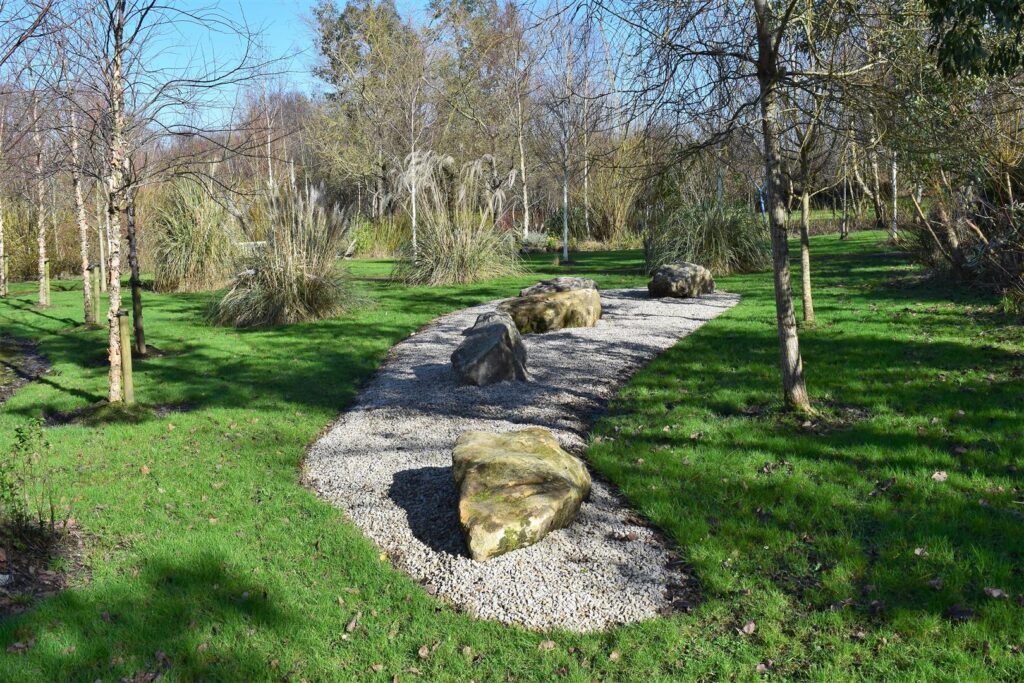


Leave a Reply